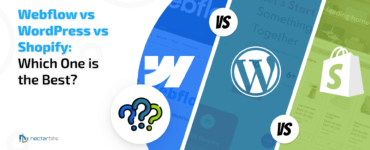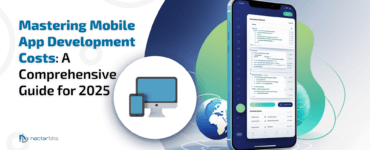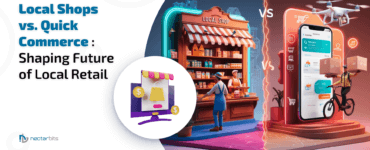10 Ecommerce Trends That Create a Breakthrough In 2021 And Years Ahead
Let’s accept it: The world has suffered from the economic downturn but the Ecommerce space has not. The Ecommerce industry has evolved irrespective of the changes brought by market conditions, customers’ behavior, and technology innovation. The changes are for good. Online retail has improved with every change and this year is no different.
In the new normal, the collection of facts, trends, and patterns enabled us to make projections for the future of the Ecommerce industry. Here’s the in-depth report on- which trends practically allow online commerce to thrive in 2021 and beyond.
The Ecommerce trends will make the online retail industry future-proof in 2021 and the years ahead.
Voice commerce open the gates for new opportunities
Increasingly, people are counting on smart speakers such as Alexa, Google’s home, and others to shop online using their voice search feature. The businesses are tailoring the content according to content and long-tail keywords used. Just the way Amazon makes the reordering plain-sailing by remembering the brand and quantity preferences, voice commerce can also do wonders.
For instance, to make the content SEO-optimized, the keywords are included differently. Say “Blue jeans” is typed by the customers to get results for blue colored jeans. On the flip side, using voice search, the users are likely to use the phrase in a question form- “Where can I find the blue jeans?”
The reality of shopping is transmogrified with AR technology
AR technology has stepped up the game of online shopping with total immersion. It helps in rendering physical store-like shopping experiences on digital storefronts, which engages the customers and differentiates the store from the competition.
The AR technology helpss retailers increase the conversion by 40% and are estimated to become a whopping $50 billion by 2024.
The AR technology integration makes the buying decision a breeze by allowing the users to see what they are shopping for and how it looks in reality (Without seeing it in person, they can feel it). It’s found that AR reality has become a stimulating factor in turning up the users for online shopping. As more Ecommerce stores are embracing the AR element, it’s expected to become a standard in the online commerce industry.
AI taking center stage in learning about customers
AI technology aims at adding a layer of automation to everything from email scheduling in CRM to personalizing the users’ journey from the get-go with little to no human intervention. AI and big data technology together doing more than just automation. They are optimizing the time-consuming and efforts expensive processes.
AI has helped France Ecommerce stores to improve sales prediction, personalization and better understand customers.
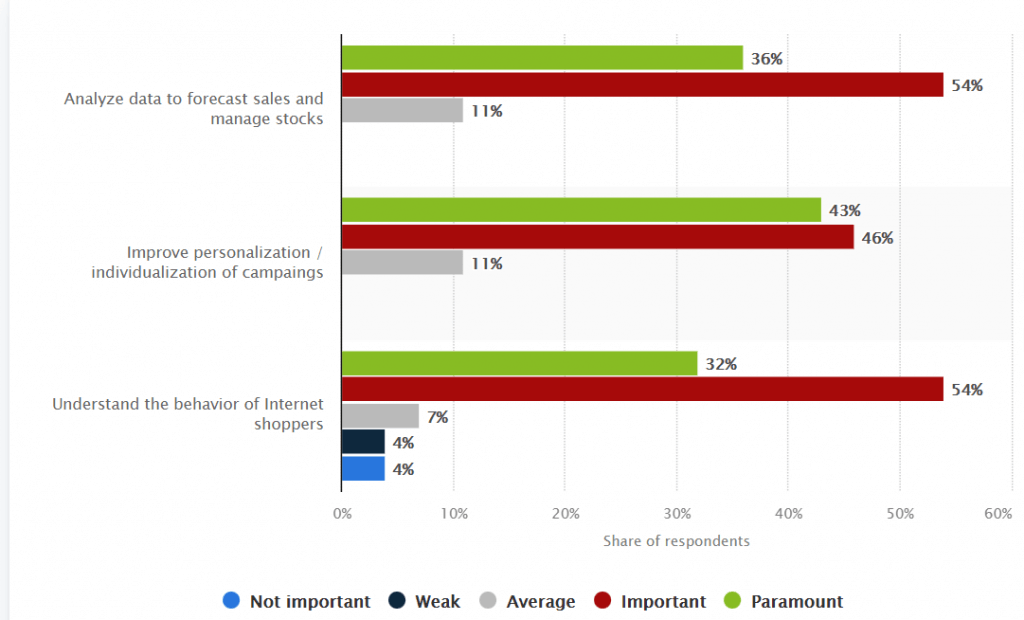
For instance, the Ecommerce stores automatically make tailored recommendations to the users while analyzing the buying history and buying patterns via intelligent algorithms. For marketing campaign launch, price optimization, identifying fraudulent or high-risk orders, and gaining customer insights, the AI algorithms prove to be a robust solution.
It convinces and conveys to the users that the brand cares about them and is willing to meet the demands that they expect.
Chatbot play an integral role in taking user experience to the new level
Today’s shopper often misses the salesperson interaction during online shopping. The AI-powered chatbots meet the need of in-store sales associates. They are the best solution when customers get frustrated and can’t buy the product in a while. Chatbots are playing a big role in customer support.
The chatbot market is forecasted to grow to $1.25 billion by 2025 with 47% people prefer to buy products using chatbot.
AI-bots continuously get trained by learning customer behavior and connecting the dots. The Ecommerce stores have witnessed the invaluable contribution of bots in improving the customer experience by helping them to anticipate the products they may be interested in.
On-site personalization enables rendering personalized experiences
In the digital universe, the personalized experience has become a norm of every type of buyer, be it B2B or B2C customers. The AI technology has enabled on-site personalization such as product recommendations and customer service through data collection and in-depth analysis. The brands harnessing AI-based insightful information, they can deliver a tailor-made experience to the customers, which customer found relevant.
The study has proven that the brands which are scaling the personalization capabilities have experienced the revenue lift by four folds with personalization efforts.
Checkout gets more personalized with more payment options
Mobile payment options have become too common among people. Taking a step further, Amazon has enabled automated checkout at one of the grocery stores, wherein the walk-out technology automatically deducts the amount from the saved credit card by detecting the items and their quantity.
However, one study unveiled the fact that people are showing less inclination towards credit cards usage. That’s where buy-now and pay-later are emerging as a new trend. The financing option is facilitated only to users with high credit card scores. There’s an alternative for users with low credit scores too, that gets finance for high-interest rates. Segmenting the users based on their credit scores enables brands to meet the users’ needs in a personalized way.
B2B commerce is also finally changing
The resistance of B2B businesses towards online ventures is now over after the pandemic badly hit the world. B2B brands are not only digitizing the B2B sales, but optimizing the transformational change throughout the business processes, operations, and workflow. UX optimization is also a part and parcel of it for making the shopping experience seamless.
Going beyond digital journey optimization, the B2B brands are exploring new ways to tell the brand story, innovating customer communications, looking at content development, offering more payment options, and improving the visibility into payments received.
Extending Ecommerce selling to social selling for high sales
Ecommerce stores are harnessing social power to increase brand awareness and user outreach. The social presence, which is a part of the Ecommerce marketing strategy is enhanced with shopping on social platform enablement.
Facebook shops and checkout on Instagram facilitate the users to not only browse the items but shop straight on the social channel. Pinterest is not even behind. The Rich pins, including- product pins and buyable pins allow the users to view the products, product’s price, and availability, and enable them to purchase respectively without needing to leave Pinterest.
Headless commerce warmly welcoming the innovation
Headless commerce provides improved control over the front-end as it decouples the Ecommerce engine from the back-end and enables developers and marketers to play different games. It facilitates content marketing, SEO optimization, controlling customer journey, flexibility on the back-end, and digital experience capabilities.
The headless-powered IoT devices are all the rage that automates commerce by sensing the items low in stock and then directly ordering the item from the subscribed store.
PWAs lending a hand in increasing Ecommerce sales
Leveraging the latest web technology, PWAs deliver native-like mobile experiences on a mobile device rather than the traditional web page. The PWAs are lightweight, perform at speed, are packed with engagement capabilities, and deliver reliable user experiences.
Increasingly, worldwide Ecommerce companies are investing in PWAs. The prevalence of PWAs has increased across Asia, Africa, and the Middle East region to deliver native-like mobile experiences to the users.
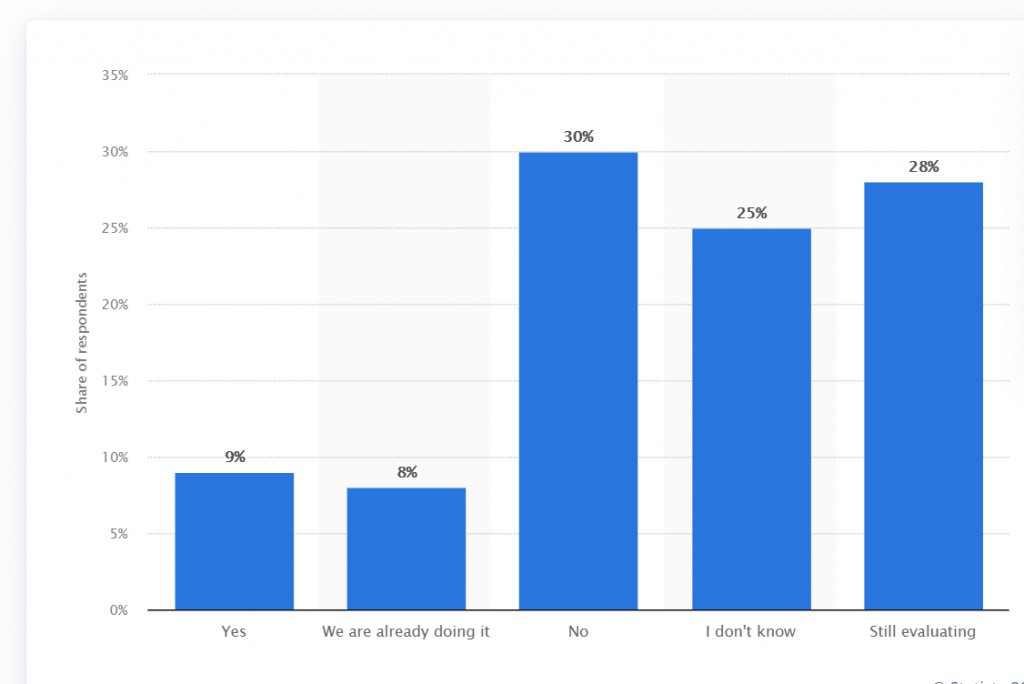
Wrapping it up
The latest trends that are making Ecommerce stores take great strides are enlisted. All of them are not a perfect fit for all the Ecommerce stores. Even no Ecommerce store can try all of them. The store needs to weigh which trend help in increasing sales and ROI, and outdo the competition. As a store owner, you should evaluate plans and then prioritize the future trends to create a win-win situation for everyone. Implement, test, and iterate for the best results.



